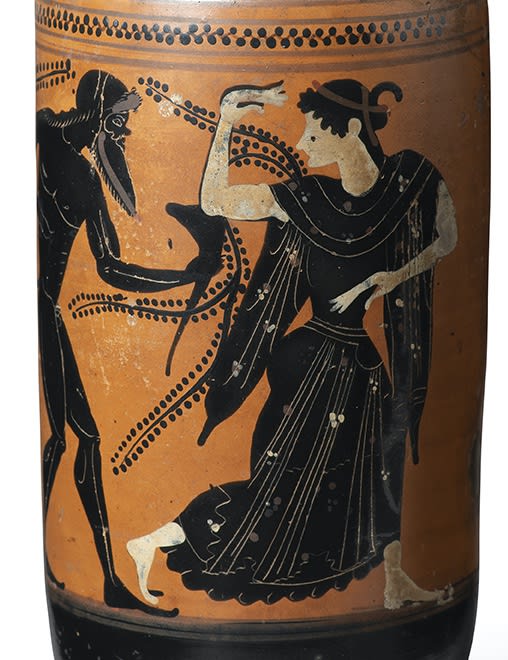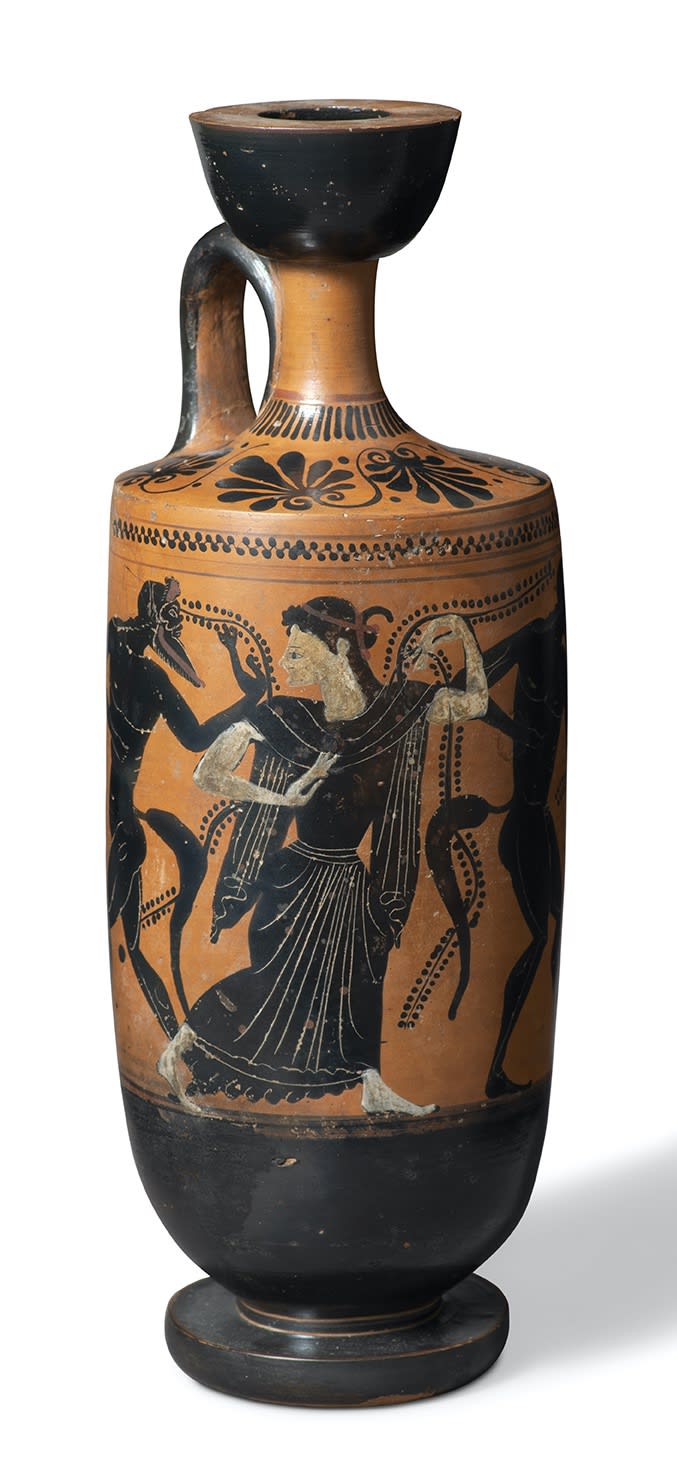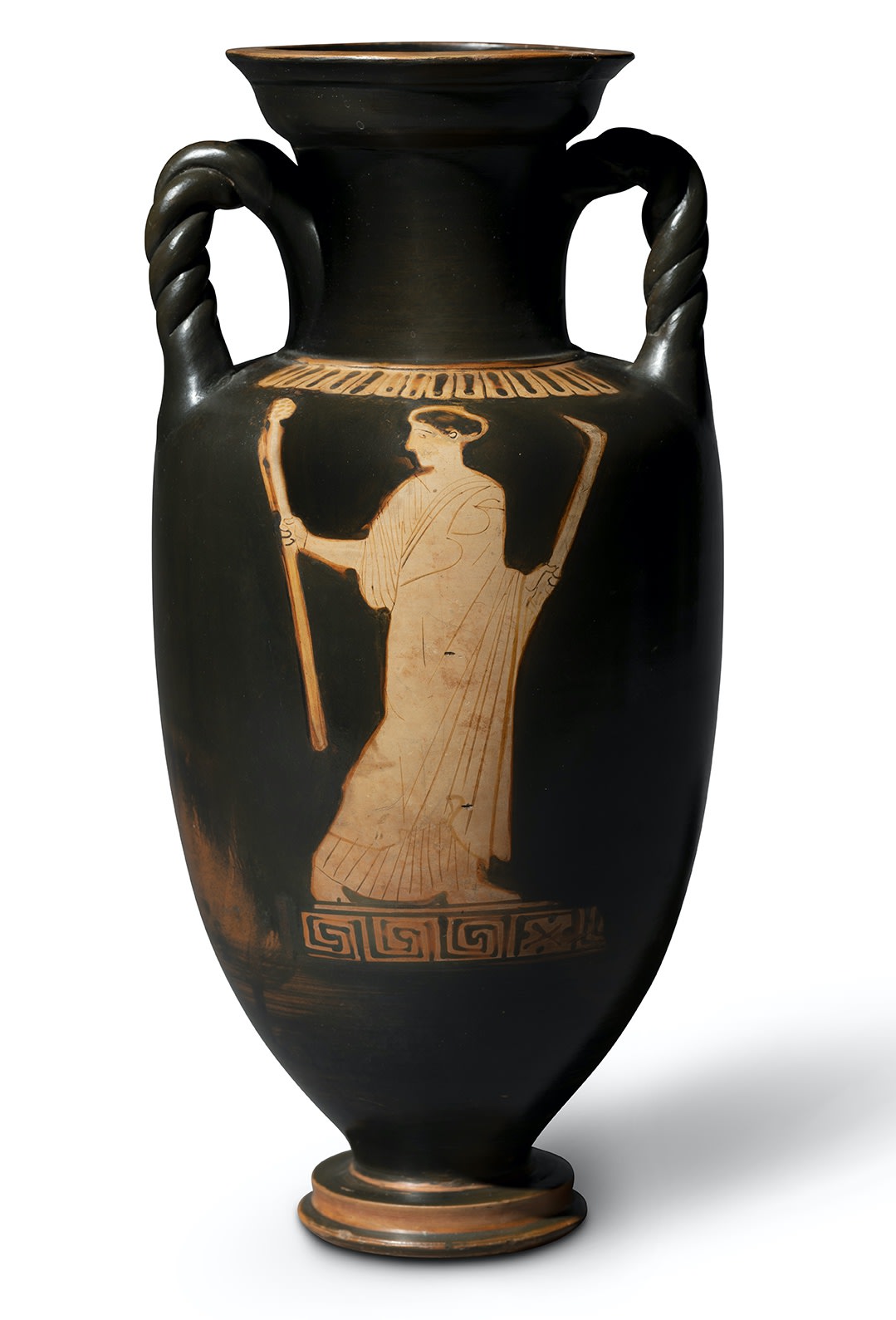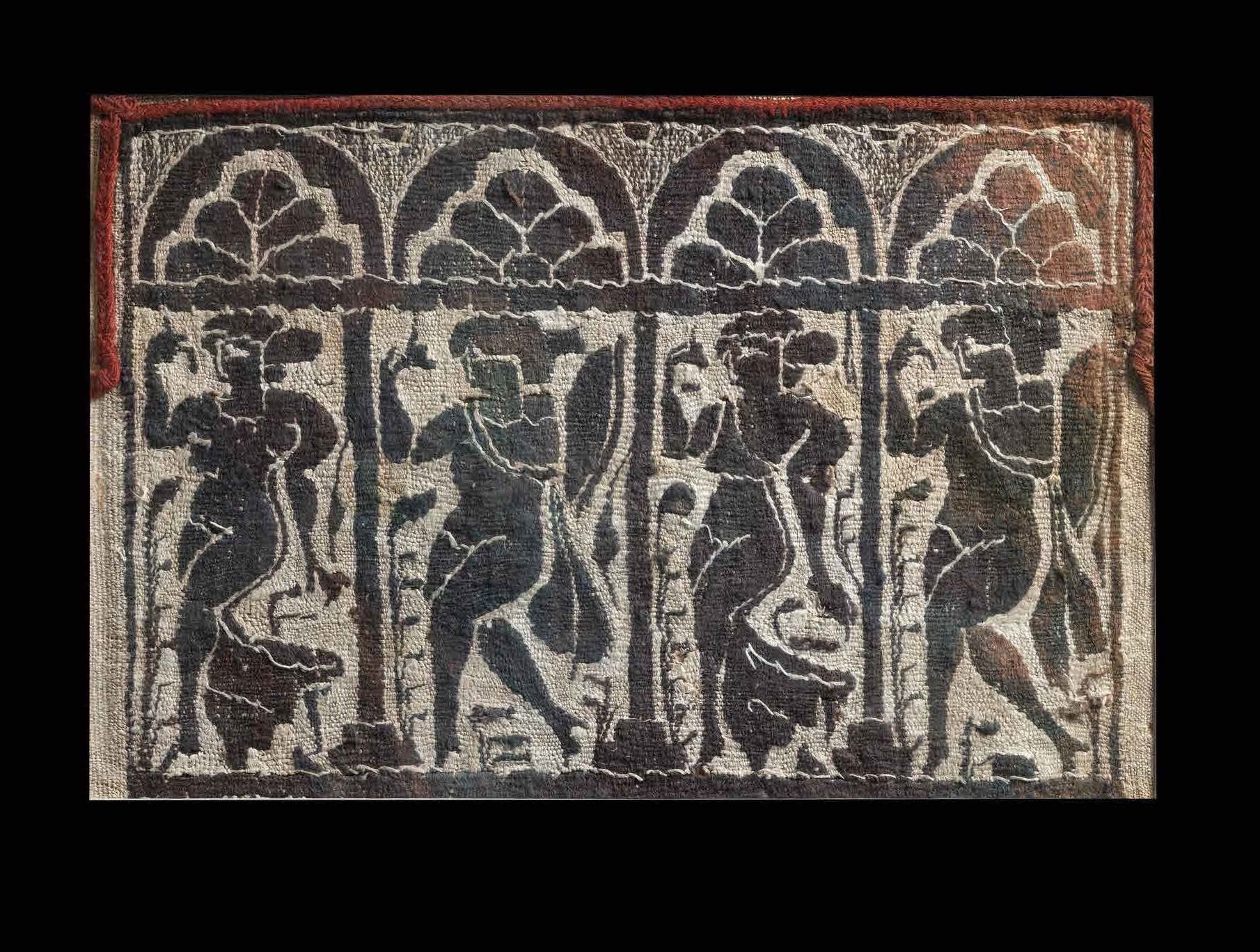MAENADS

Following on from our last Insight, which explored the importance of a powerful hairstyle in Roman female portraiture, we have decided to continue looking at different themes surrounding women in antiquity. First up, is the wonderful world of maenads.
Maenads were the female followers and revellers in the cult of the god Dionysus. They were one of the most important parts of his retinue, and they accompanied the god on his travels crowned in wreaths of ivy and draped in animal skins.
The name maenad originally meant 'raving ones' as they were believed to be possessed by the god while under his influence. The practice of maenadism is thought to have begun in Thebes, coinciding with the birth place of Dionysus.

AN ATTIC BLACK-FIGURE LEKYTHOS
NEAR TO THE GROUP OF THE CRACOW PELEUS
Circa 525 - 475 BC, Height: 30.4 cm
Maenads were a favoured subject for Classical Athenian potters and painters, particularly on wine-drinking vessels. Scenes of maenads often included other characters from the Bacchic retinue, such as satyrs. Satyrs pursuing fleeing maenads, or frolicking maenads were popular themes depicted on ancient vases. These Bacchic theme vessels were mostly used during the Symposium, where Dionysus was honoured through the lively consumption of wine and other delights.
The maenads' mode of dress makes them easily identifiable in ancient art. Loose, free flowing hair and dress is combined with other Bacchic attributes such as animal skins, garlands of ivy and a thyrsus. They are almost always depicted barefoot signifying their wildness and unrestraint.

AN ATTIC RED-FIGURE NOLAN AMPHORA
Circa 475 - 450 BC, Height: 33 cm
The most famous account of maenadism can be found in Euripides' tragedy The Bacchae. Produced in 405 BC, it details the return of Dionysus to his birthplace of Thebes. The Bacchae provides a highly vivid picture of maenads’ erratic and frenzied state, as possessed by a drunken ecstatic rapture, the female characters create utter chaos.
Such tragedic and the artistic depictions of maenads characterise a trope of antiquity: that of the risk of disastrous social disorder if women are left unattended by men or allowed out of their domestic sphere. Maenads embody the dangers of uninhibited female rage, power and depravity to which the classical world believed women could succumb without the careful supervision of men.

AN EGYPTIAN 'COPTIC' TEXTILE FRAGMENT
Circa 4th - 6th century AD
Wool, linen
Framed size: 53 cm x 40 cm
One of the cult practices of the maenads included ecstatic contorting and dancing, which was accompanied by music and the wild yelling of the participants. The energy of these rituals was believed to be imbued in them by Dionysus himself, who caused his worshippers to experience such frenzy and mania. Depictions of maenads in this frenzied state almost never feature additional characters, as their raving revelry was considered an intrinsic outlet of being a woman.
Representations of maenads were not just limited to Archaic and Classical vase painting and sculpture, they were also a popular theme on Coptic textiles. The popularity of the cult of Dionysus meant it spread across the ancient world, and was introduced to Egypt by the early Ptolemaic rulers in the 3rd century BC, and continued into the Byzantine period. The popularity of Dionysus in Egypt resulted in numerous textiles depicting Dionysiac themes.
Artists and sculptors from the Christian period and throughout the ages continued to make these wild women their subjects. The allure and fascination with maenads means that they are one of the most prolific groups in surviving religious imagery from antiquity.

AN EGYPTIAN 'COPTIC' TEXTILE FRAGMENT
Circa 4th - 7th century AD
Wool, linen. Framed size: 36.5 cm x 21 cm